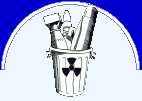Some catastrophes are predictable, even though their dates are not.
We know, for example, that a major earthquake could at any moment strike San Francisco and California, along the San Andreas faultline. Similarly, it was predictable - and predicted - that the Japanese archipelago would suffer more quakes of high magnitude. The one measuring 8.9 which hit the NE coast of Honshu island on 11 March 2011, some 250 km north of Tokyo, was the strongest ever recorded in Japan. It was followed by a tsunami and numerous aftershocks.
Being an advanced nation with foresight and wealth, Japan knew, when building its buildings and educating its citizens, how to take preventive measures to limit as best it could the human losses that earthquakes might cause. In fact, the victims of the actual quake of March 11 seem to number only dozens and the victims of the tsunami probably thousands - unlike the Haiti quake of January 2010 where poverty and underdevelopment multiplied the effects of seismic violence.
But what technology gives with one hand it takes away with the other, and more: by means of nuclear plants it provided Japan with a means of turning the natural disaster into a possible world catastophe. There are indeed direct immediate local victims of this now, and there will also be indirect, delayed victims - national and international, uncountable and virtually innumerable. As after Chernobyl.
Events which the Japanese government could have perfectly well foreseen decades ago (but preferred to ignore under the influence of the atomic industry) are occurring under our eyes: the quake and tsunami caused very grave damage to at least two nuclear reactors - the 40-year-old reactor 1 in the Fukushima Daiichi complex which has six, and reactor 3 in the nearby Fukushima-Daini plant. Because, in order to cool the core of its reactors every nuclear plant needs a large amount of water from a river or from the ocean, these plants were built on the Pacific coast, at the mercy of a huge wave. The situation is similar with many nuclear plants in the world, including some in France.
It is still too early to say precisely or surely what happened and is happening near Fukushima. The bulletins filtering out from Japan follow and contradict one another, alternating reassurances with disturbing news. As the BBC’s Richard Black has said,
"Japan’s nuclear industry has not exactly been renowned for openness and transparency. Tepco itself has been implicated in a series of cover-ups down the years. In 2002, the chairman and four other executives resigned, suspected of having falsified safety records at Tepco power stations. Further examples of falsification were identified in 2006 and 2007."
One can say the same of the IAEA, which on 12 March put out a media release based on Japanese "assurances" and obviously intended to downplay the risks. One can say the same of the French government too, which assured us on March 13 that our compatriots living in Wallis and Futuna or New Caledonia were not touched by a hypothetical wave of radioactive fallout ; obviously the Metropolitan French were supposed to conclude that there is nothing to fear for their lungs or thyroids. And nothing to fear, no doubt, from the 58 nuclear reactors built near their homes in France, many of which are sited in seismic zones, coastal zones, or both.
At this stage of knowledge/disinformation, here’s how things seem to be: the quake of 11 March provoked an automatic halt in reactor functioning. It also deprived the plants of their own electricity, and apparently caused in the Daiichi reactor n° 1, and probably in Daini n° 3 too, the breakage of the water pipes feeding the primary cooling circuit - which is indispensable for lowering the residual heat of the reactor core.
The tsunami wave then flooded the plants, and apparently knocked out the electricity generators and emergency cooling pumps. What followed was a rise in temperature and pressure in the reactor, release of hydrogen, partial evacuation (by the operator Tepco) of gases from the confinement area into the inside of the building, and then an explosion of hydrogen breaking the building’s outer walls, leaving only the metal structure, and releasing radioactive gases into the atmosphere. Attempts to cool the core with sea-water laced with boron seem to have failed: the uranium rods are mostly exposed to the open air.
On March 13, while hundreds of thousands of people were fleeing the Tsushima region in a massive exodus, partly organised, partly spontaneous, Japan’s government and nuclear security agency admitted that some radioactive products had escaped and that fusion was probably beginning in the core of the two reactors in question. Other sources declared that the situation was out of control in those two reactors and also becoming so in others.
Should we be astonished by such events? Incidents in 2007 at the Kashiwazaki-Kariwa nuclear plant in Chuetsu-oki, when a magnitude 6.8 quake occured, made it clear that the nuclear security systems were fragile.
But there doesn’t need to be an earthquake to blame. We had a comparable situation in France when a storm crossed the country on 27 December 1999. The violent winds raised the level of the Gironde waterway and over 100 000 cubic metres of water invaded the buildings of the Le Blayais nuclear plant, causing short-circuits and knocking out the emergency cooling pumps. When one reads the interview that the plant’s director gave some months later to the regional daily, one realises that France came close to experiencing her own Chernobyl... but most French citizens, of course, have never known anything about that.
As from today, after Fukushima, and even if the situation there is brought under control, as we earnestly hope, nobody will ever again be able to say things like this : "Nuclear technology is safe, Chernobyl is the exception that proves the rule, Chernobyl could only happen in countries with shaky technology like the USSR in 1986, Chernobyl doesn’t concern France, radiation clouds halt at national frontiers, Chernobyl could never happen here."
Now nobody will be able to say: "French citizens, vote for me, I will sell plants (and weapons) to Libya, a modern democratic country. I will sew a nuclear hem around the Mediterranean. I will sell Brazil a nuclear sub and Rafale airplanes. For the sake of improving our balance of payments and the well-being of all citizens, I will export EPR reactors and lots of weapons all round the world."
On 22 February 2011 an earthquake left 200 dead or missing in Christchurch - apparently more than the direct casualties of the earthquake itself (not counting the tsunami) in Fukushima and all of Japan. But the catastrophe stopped there: New Zealand had made the choice to have no nuclear plant and no nuclear weapons. That’s an example which others need to reflect on, particularly in France where the dominant political elites have chosen to listen to the arms merchants and the pushers of nuclear technology.
Do the French really consent to end up as radiation fodder? It is essential that they be consulted.
Saintes, 13 March 2011
Jean-Marie Matagne, president of ACDN (Action of Citizens for Nuclear Disarmament) www.acdn.net
contact@acdn.net
++ 33 6 73 50 76 61





